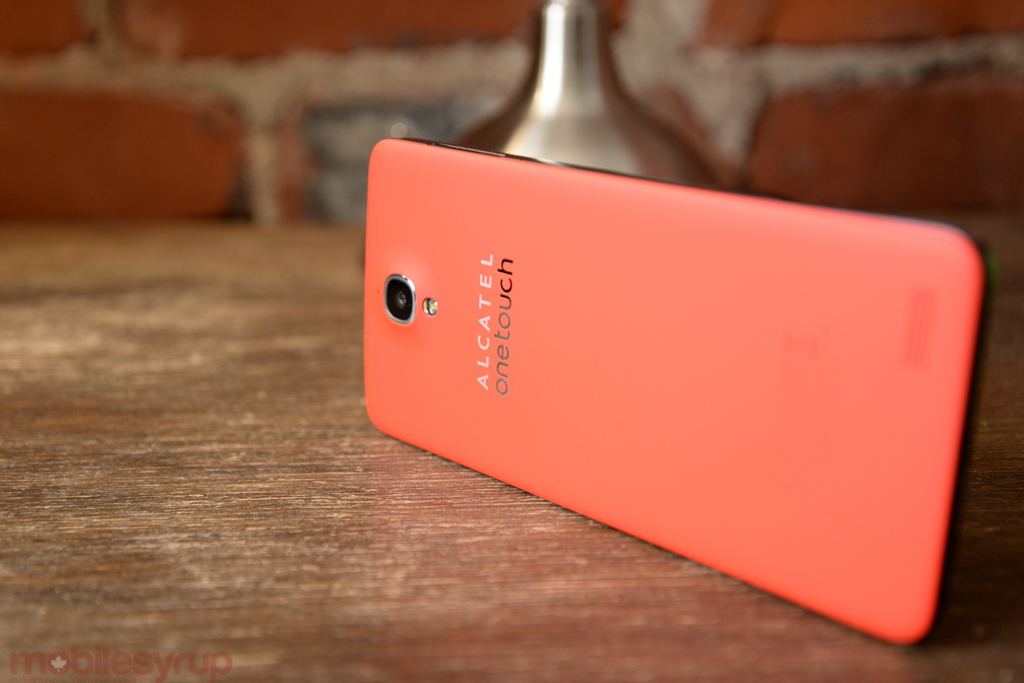
The idea of a smartphone as a tool — a blade, a shovel and a pen — has largely been lost in the era of Candy Crush and Twitter. Since not everyone can afford a high-end device, the chasm between “phone-as-utility” and “phone-as-fun” has created two disparate and opposing sides to the regime. It’s especially true of the Android ecosystem, where until a year ago the difference between a $100 and $600 device was akin to using a completely different operating system.
Companies like Alcatel One Touch are looking to disavow that notion by releasing seemingly high-end devices for under $300. Idol X, the company’s flagship for North America, has on paper few compromises for a $250 Android handset, but dig deeper and you realize there are a few important areas of sacrifice. Alcatel One Touch uses the phone’s size and resolution to convey a premium marketing message, but is it worth choosing over some other similarly-priced handsets? Let’s take a look.
Specs
- Android 4.2.2 w/ custom skin
- 5-inch 1920×1080 pixel IPS display
- 1.5Ghz MediaTek MT6589+ SoC w/ PowerVR SGX544 GPU
- 2GB RAM / 8GB internal storage (plus microSD)
- 13MP rear camera, 2MP front-facing camera
- WiFi (b/g/n), Bluetooth 4.0, A-GPS
- 140.4 x 67.5 x 6.9 mm
- 130 grams
- 2,000mAh non-removable battery
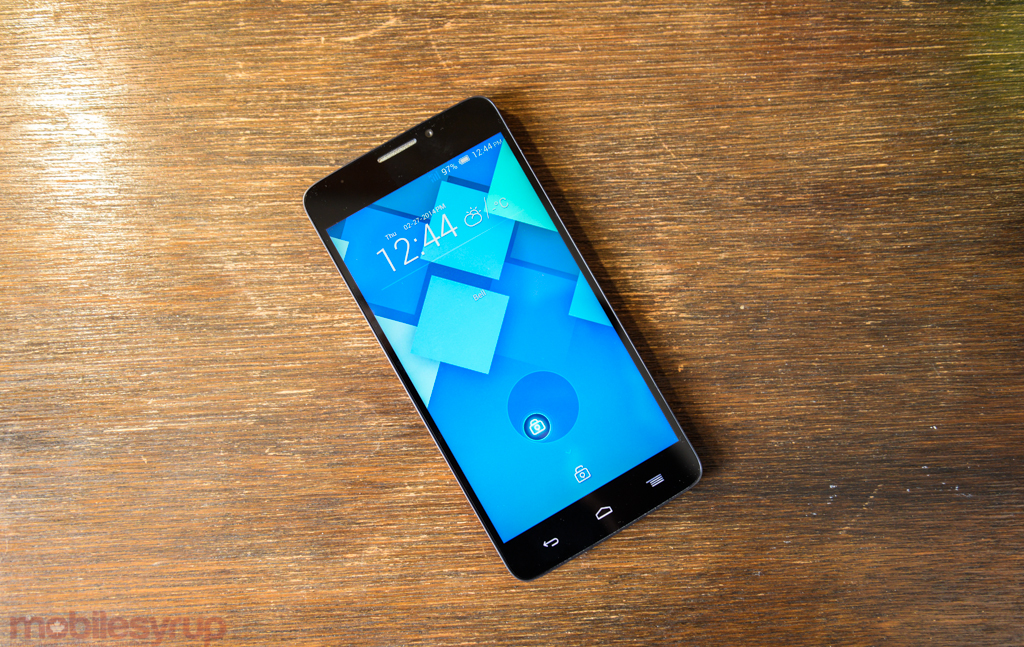
What Works
The right-out-of-the-box impression of the Idol X is largely positive: it is slim, light and well-built, with a soft-touch backing that reminds me of the Nexus 5. The 5-inch 1080p screen is vivid and bright, though viewing angles are mediocre and colour accuracy is well off; the IPS display appears to have been calibrated by a blind robot.
Without studying its idiosyncrasies, there is no indication that the Idol X is less than half the price of a flagship Samsung or HTC device: it feels excellent in the hand, has a network of push tabs for accessing the storage and SIM slots from which competitors like Sony could borrow a few ideas. The three-button capacitive navigation scheme takes a page not from Samsung but LG, whose LG Optimus G placed the menu button to the right of home, with the back button to the far left.
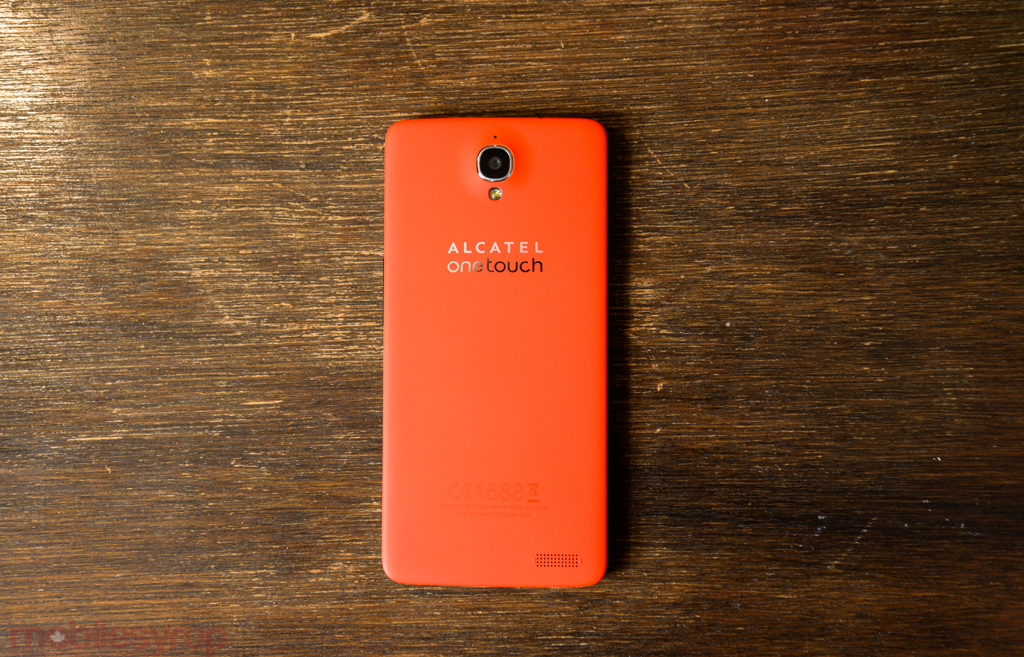
When the screen is on and the OS working, it’s easy to tolerate Alcatel One Touch’s inoffensive Android skin, built on OS 4.2.2. Aside from a few garish icon choices, there is little to be amazed at, or surprised by; there is a useful four-app shortcut system on the lock screen that takes you to either the phone dialler, messaging app, camera, or straight into the home screen. Many of the interface specifics seem to have been cribbed directly from a second-hand idea of Samsung’s TouchWIZ, but this was an accusation I levelled at LG with the G2, a company with absolutely no reason to be copying its Korean counterpart. And I’ll give AOT bonus points for not bothering with its own keyboard; Swype is pre-installed on the Idol X, a decision that many other manufacturers should copy.
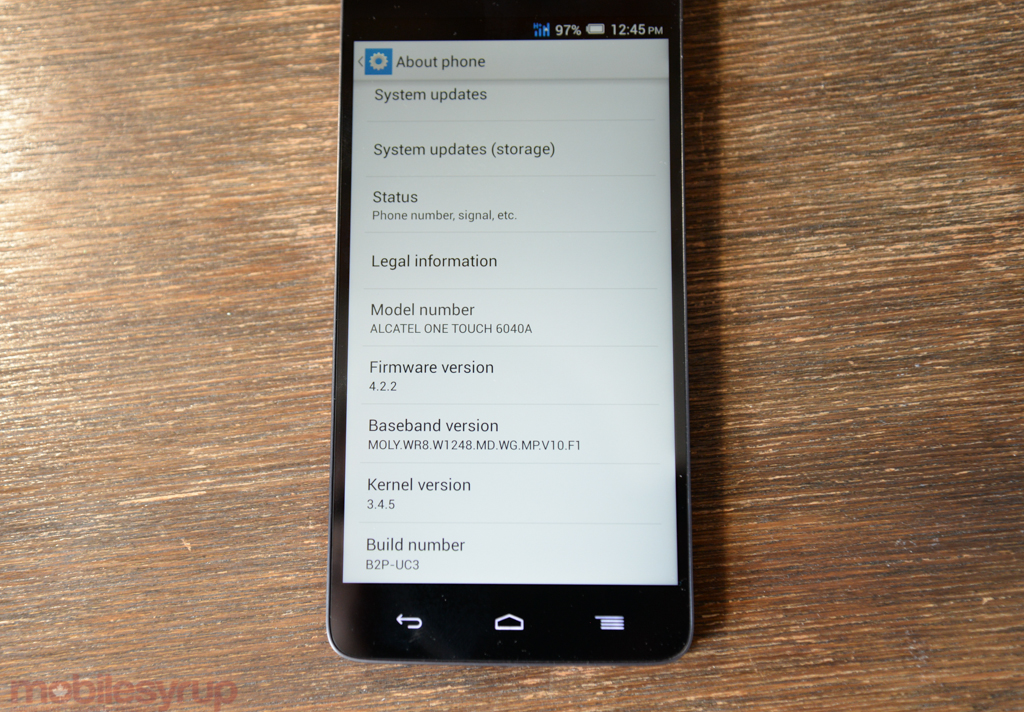
I’ll also go easy on the fact that the Idol X takes decent photos from its 13MP camera, and performance should suffice for the average user. It by no means comes close to the equivalent quality of the Samsung Galaxy S4 or LG G2, both of which have sensors of similar megapixel counts, but there are some bright spots to be found. Colours, though muted, are relatively accurate, and the software is quickly able to adjust the exposure and contrast to suit a particular scene. It’s in the details, literally, that the Idol X’s camera performance falls apart: there’s a ton of distortion and grain in each shot, and the shutter is relatively slow compared to its competitors.
Battery life from the non-removable 2,000 mAh cell was also relatively good, too, but this comes at a price, that we’ll talk about in the next section. I was able to get a decent amount of uptime from the Idol X, though pushing the smartphone is more difficult than one with a more modern processor.
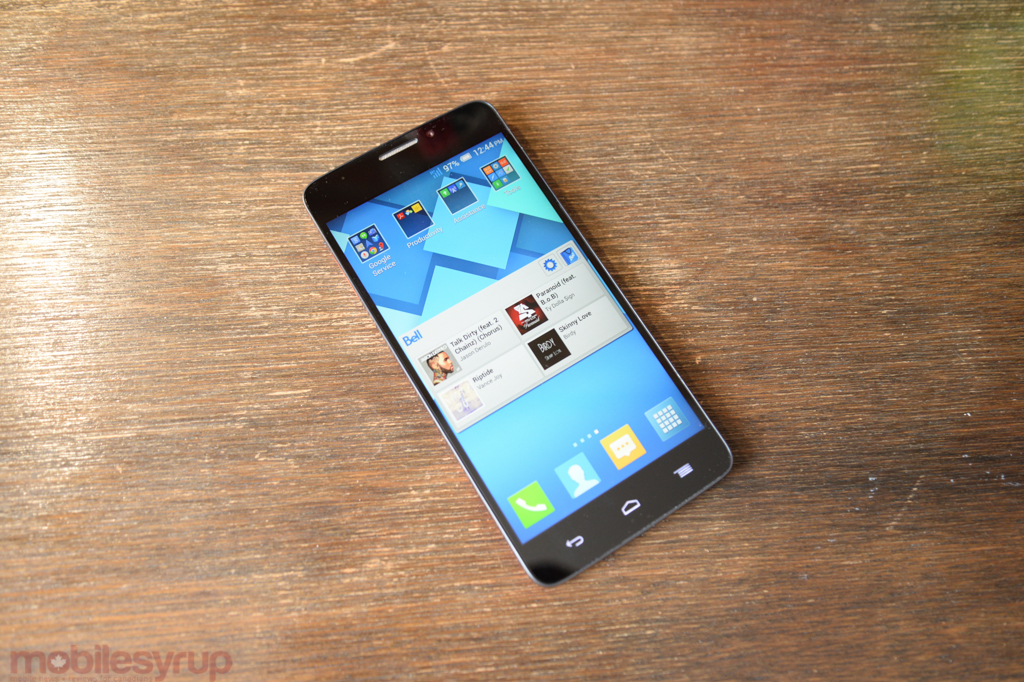
What Needs Work
Where to start? On paper, the “1.5Ghz quad-core processor” sounds quite impressive, since most modern devices have a similar spec sheet. But digging deeper finds that processor to be the MediaTek MT6589+, a now-ancient system on a chip running four Cortex-A7 cores. Even worse is the Imagination Tech PowerVR SGX544 graphics chip, which was long in the tooth two years ago.

In benchmarks that are merely CPU-intensive, the Idol X fares alright; in GPU-heavy benchmarks, like the all-rounder AnTuTu suite, the Idol X’s chipset really shows its age. It’s not only in benchmarks, either, that the Idol X struggles: this $250 device feels sluggish all over. Whether it’s navigating through the home screens or loading apps or watching movies, the device constantly feels like it’s on the verge of depleting its virtual breath. It looks pretty, but it’s all for naught when you actually want to use it.
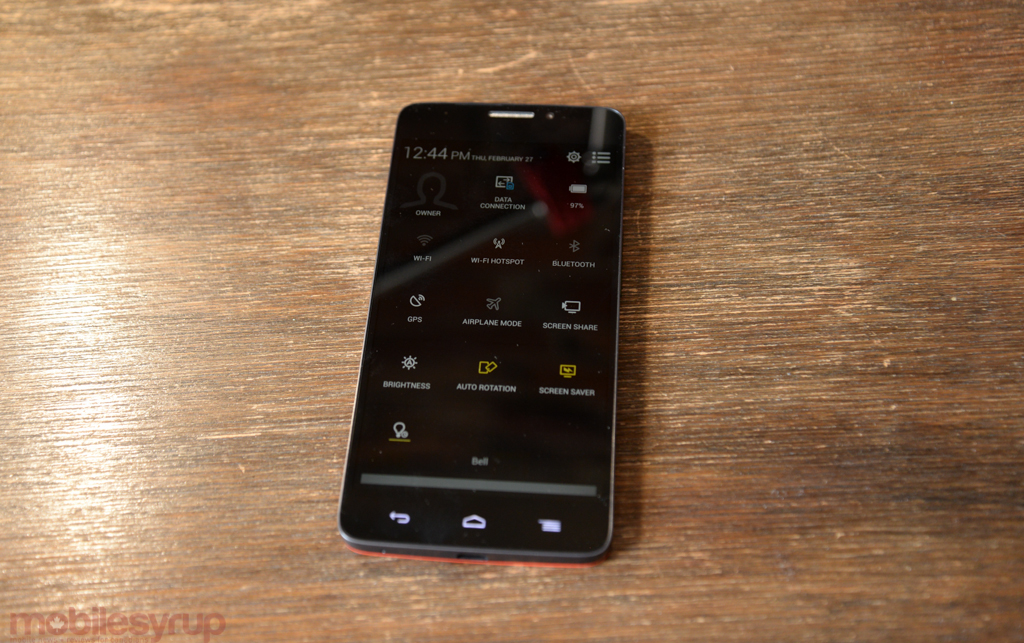
The other main issue for Canadian audiences is that the Idol X lacks any sort of LTE connectivity; it does support DC-HSPA+ on Bell’s network (where available), but the majority of Canadians will be stuck with 21Mbps HSPA+. I averaged 3-5Mbps down and 0.5-2Mbps up depending on the time of day and location — fine, but nothing to be laud these days. The device also lacks 5Ghz WiFi and comes standard with a chintzy 8GB of storage.
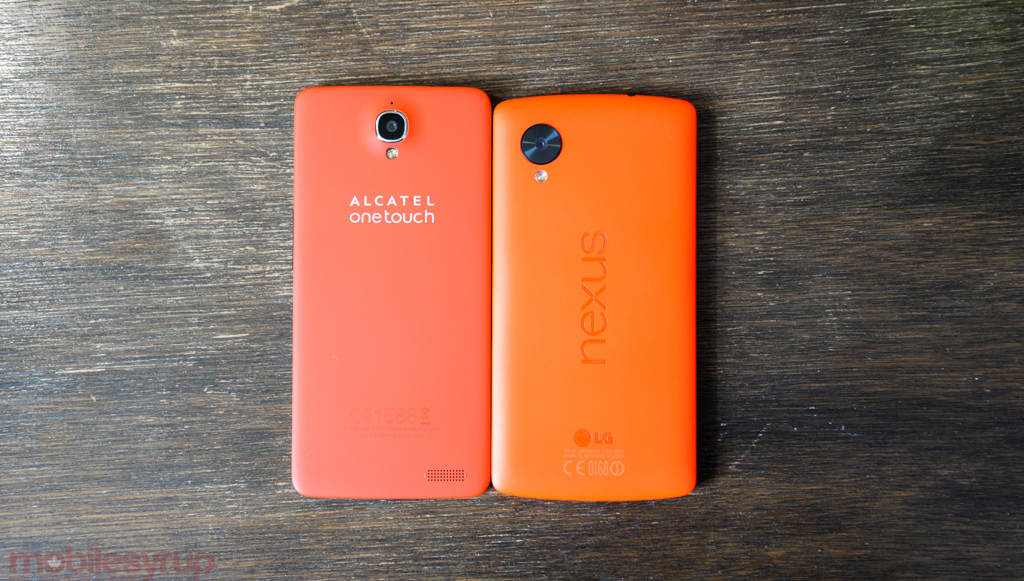
Conclusions
This isn’t going to be one of those times where I end with, “…but the good parts make up for the bad.” The AOT Idol X is a nice-looking phone that provides a decent screen and an inoffensive Android skin. But its processing capabilities are appalling, which would be fine if it didn’t bring down the rest of the experience. Using the Idol X is like running with boulders strapped to your legs, so unless you’re on a strict budget, avoid it. Bell sells the Nexus 5, a far superior device, for the same price, $0, on a 2-year term, and it’s only $100 more when purchased off-contract at Google Play.
Alcatel One Touch likely saw the tepid response the Idol X would receive, as it’s already followed it up with the Idol X+, the same device with a much faster processor. That speaks volumes.
The Alcatel One Touch Idol X is available at Bell for $0 on a 2-year term and $250 outright.
MobileSyrup may earn a commission from purchases made via our links, which helps fund the journalism we provide free on our website. These links do not influence our editorial content. Support us here.


